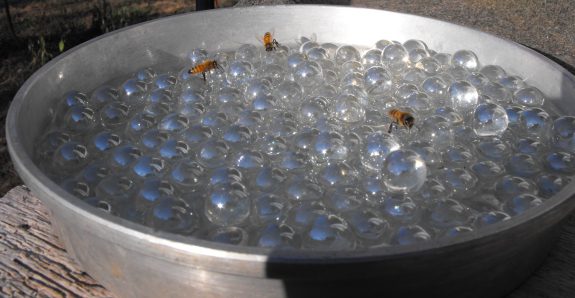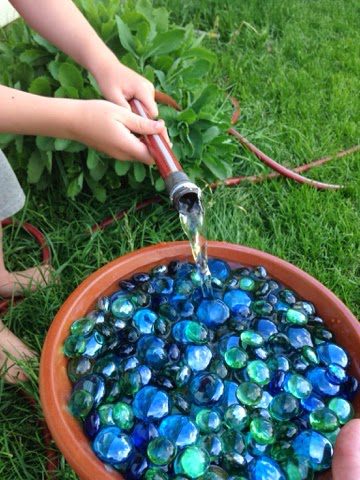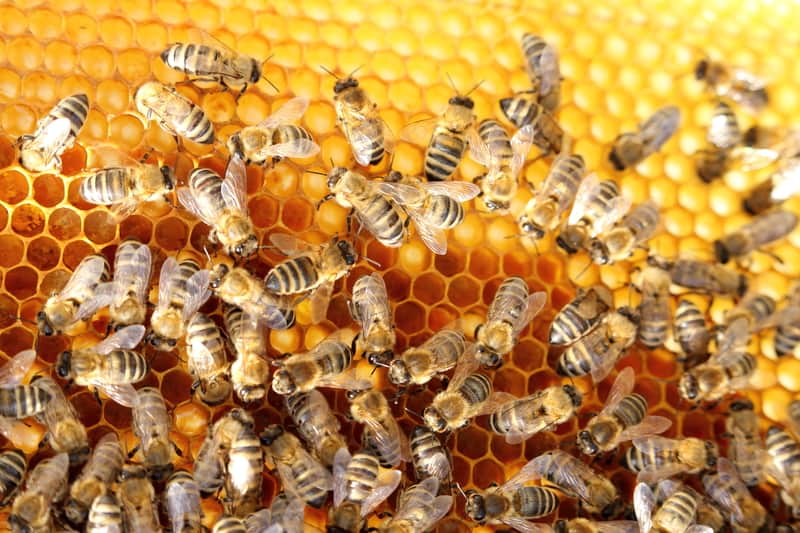With their tiny wings beating 10,000 times every minute, bees tend to at least 2,000 blossoms per day, transporting pollen and significantly boosting our food supply. The bees are thirsty after all that effort, especially on a hot day.
Sound exhausting? Bees get thirsty, and they need safe water sources. The problem is water is not always available.
Make Your Own Bee Waterer

Bees need very shallow water to drink from. However, shallow water evaporates quickly. Birdbaths are not the best option as bees tend to drown if the water is not shallow enough. As for rivers and lakes, bees risk their lives trying to get water in the presence of fishes, frogs, and other wildlife, not to mention the risk of being swept away in water currents.
To help hydrate our little pollinators, set up a water feeder by filling a pie pan with marbles and then water. The marbles give the bees a spot to land so that they don’t drown when they come to drink. No more drowned bees! Change the water frequently to avoid mosquitoes laying eggs in the water.

Do not add sugar to the bee waterer
Whatever you do, do not add sugar as it can harm the bees in many ways.
Bees take shortcuts, which is the first method it might cause harm. If a bee can receive sugar from water instead of visiting hundreds of flowers, it will take the easier route and return to that sugar source rather than visiting and pollinating flowers. Other bees will rapidly figure out where the sugar is coming from. A basin of sugar water can attract hundreds of bees in a short period of time.
Not only do these bees not pollinate flowers, but they also store sugar water in their hive alongside honey, effectively washing down the honey. Beekeepers do not want you to feed sugar to the bees. Sugar water can not only hurt bees in this way, but it can also harm birds and other animals.

Do not add honey to the bee waterer
Some people who followed the misguided advice to add sugar to water have thought that honey is the next logical step.
Honey water not only has the same issues as sugar water, but it can also lead to the extinction of entire colonies.
Honey may contain spores of the Paenibacillus bacteria, which causes AFD (American Foulbrood Disease). It is poisonous to bees. The bees will bring the honey back to their colony, and if it includes the disease, the entire hive will be infected.
The only way to get rid of it is to fire the entire hive. Wild bee species may die and the infection will continue to spread.
Although the sickness is uncommon, it is exceedingly dangerous. As a result, giving honey to bees is prohibited in Australia.
So, let me say it again, don’t add sugar or honey to the bees’ water.
If you know someone who might like this, please click “Share!”
